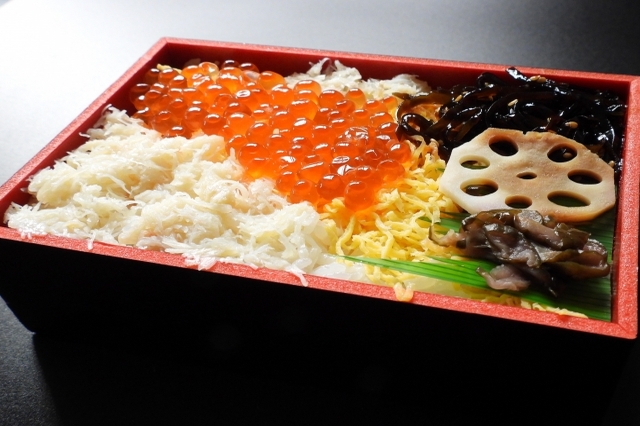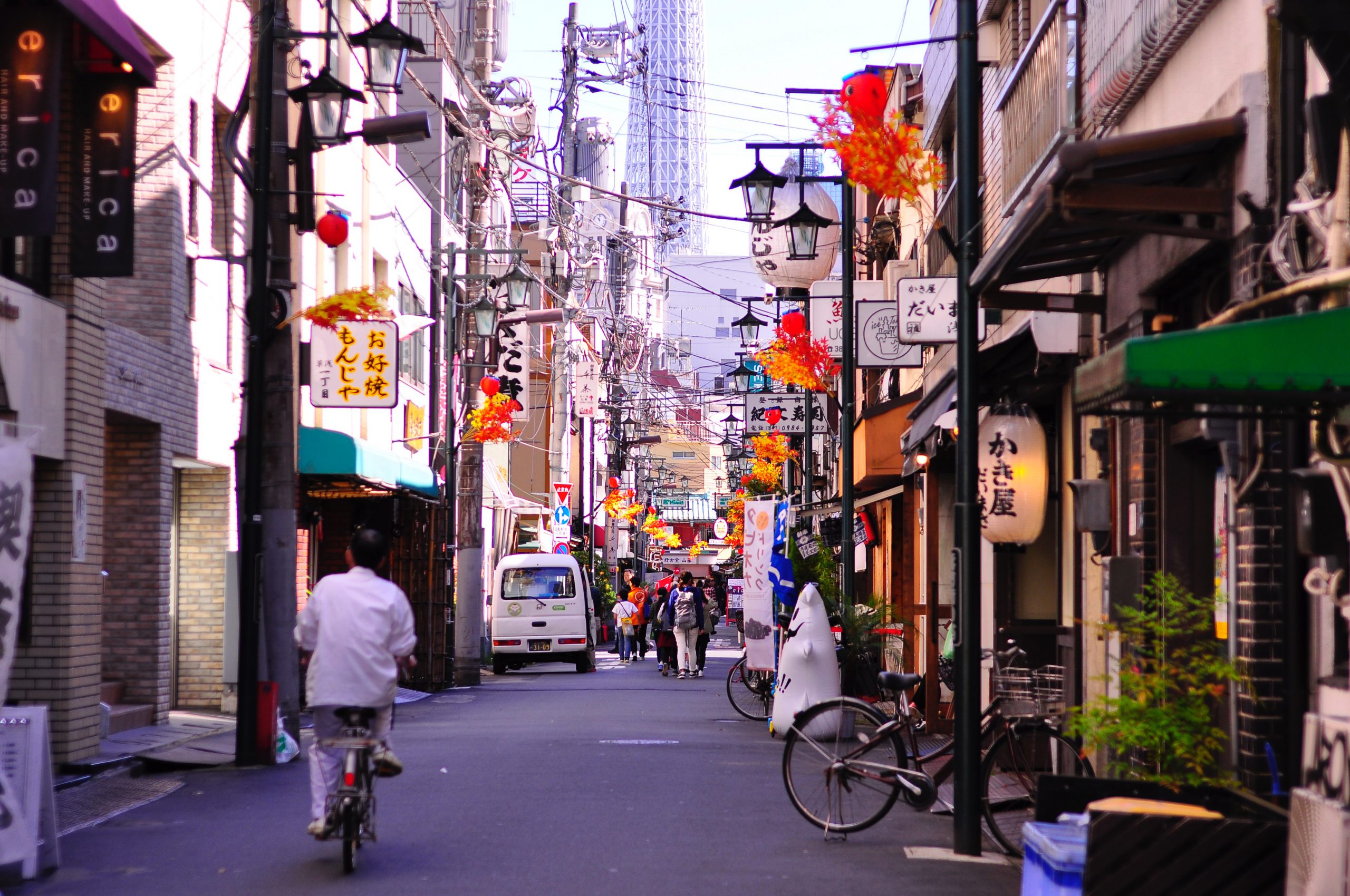Ekiben (駅弁) is a special kind of lunch box that you can usually get at train stations in Japan. People enjoy eating it on the train, especially when they are traveling long distances on holiday. Each region of Japan has its own range of unique ekiben which can be found at not only local stations but also major stations in big cities and on the shinkansen. For international travelers it is a great opportunity to try local specialties without visiting the region in person. The reasonable prices also make ekiben a popular option for people who don’t want to spend a lot of money, but are still interested in trying different food cultures. This article will help you get to know the fundamental concept of ekiben culture and must-try ekiben collections in Japan!

What is ekiben?
Ekiben consists of two Japanese words: “Eki” (駅) and “Bento” (弁当). Eki means station and bento refers to lunch boxes that people generally bring to work or school. So basically ekiben literally refers to the lunchboxes from the station. In Japan, the convenient ekiben are widely known and available at stations, trains such as Shinkansen, and sometimes at department stores.
You might think of fast food lunch boxes, but ekiben are often of high quality and local regions take pride in their ekiben. Great care is put in the food as well as the packaging. The lunchboxes generally include rice or noodles, vegetables, and a small amount of meat or fish. Ekiben come with disposable chopsticks or spoons. Generally speaking, the price of a meal sized ekiben is somewhere between ¥700 and ¥1200.

Brief history of ekiben
History of ekiben is said to date back to the Meiji period (1868-1912), when Japan became part of the international community after 260 years of national isolation. People started to to sell ekiben with simple dishes such as rice balls and Tsukemono (漬け物), traditional Japanese pickles often eaten with rice.
When more and more train tracks were completed nationwide, the ekiben culture started to spread across Japan. It resulted in a range of ekiben consisting of local specialties from each region. The popularity of ekiben reached its peak during the Showa Period (1926-1989). At that time, ekiben were mainly sold at small stalls that could be found at the platforms of stations. People would pick up their lunch without leaving the platform as they were waiting for the train to arrive.
Even today, ekiben stalls can still be spotted at some platforms. They usually sell a variety of products just like convenient stores, including ekiben. But at present, more people buy their ekiben at stores inside stations. Inside the train station they have more options to choose from!
Sometimes you can also buy your ekiben at department stores, for example at the Ekiben fairs. Department stores offer a variety of ekiben selected from each region in Japan and people can stop by after work easily and conveniently and get their favourite ekiben, without travelling to other regions.

Another popular place where you can also get your ekiben is on the shinkansen. The shinkansen trains form Japan’s primary transport system, connecting most areas across Japan. The incredible services and punctuality that are highly evaluated internationally, include an on-board catering by friendly staff. A wide variety of food and drink options are sold onboard, including ekiben coming from the region the bullet train passes. For example, if you take the Shinkansen from Tokyo to Osaka, you will have a chance to try ekiben sold only in the region between them!
Popular ekiben of each region in Japan
Getting excited by the concept of ekiben, but don’t know which one to choose? Here is a helpful list of popular Ekiben collections of each region that you must try once you visit Japan.
1. Hokkaido ekiben
The ekiben from Hokkaido often are filled with high-quality seafood caught from the nearby sea. Hokkaido has a number of ekiben with fresh seafood such as tuna, salmon, boiled crab, and much more! Ikameshi (いかめし) refers to a delicious boiled squid filled with rice seasoned with soy sauce! Try any of them that catches your eyes at stations!
Hokkaido ekiben recommendations
- Crab Bento (かに弁当), other seafood Ekiben
- Ikameshi (いかめし) Bento, Mori station
2. Tohoku ekiben
Comprising 6 prefectures, the Tohoku Region is home to a wide range of local specialties. The diversity of food allows you to choose the satisfying ekiben based on your preference. Try Yonezawa beef, which is widely known as one of the best Wagyu beef in Japan. Gyutan (牛タン) is the tender beef tongue which many people enjoy. Situated along the northeastern coastline of the main island of Japan, the Sanriku area offers a variety of fresh seafood such as sea urchin, a luxury food in Japan!
Tohoku ekiben recommendations
- Yonezawa Beef Ekiben (米沢牛), Yamagata
- Gyutan (Beef tongue) Ekiben (牛タン弁当), Miyagi
3. Kanto ekiben
The Kanto Region covers a vast area, including Tokyo, Kanazawa and surrounding regions. Toge no Kamameshi (峠の釜めし) is a classic ekiben that has been sold in Gunma prefecture since the 1950’s. The Tokyo Bento (東京弁当) features fancy dishes from famous Japanese restaurants with a long history in Tokyo. Shumai Bento (シュウマイ弁当) contains Chinese dumplings that can be found at a lively gourmet spot Yokohama Chinatown in Kanazawa prefecture.
Kanto ekiben recommendations
- “Toge no Kamameshi” (峠の釜めし), Gunma
- “Shumai Bento” (シュウマイ弁当) , Kanazawa


4. Chubu ekiben
The Chubu area includes nine prefectures that are home to popular tourist destinations such as Hida Takayama in Gifu and Nagoya in Aichi. Try Hida Beef Bento(飛騨牛しぐれ弁当), which features the incredibly tender Hida beef that melts in your mouth. Matsuzaka Beef is another world-famous Wagyu beef which can be found in Mie prefecture. Don’t miss a chance to experience the amazing wagyu beef for a reasonable price.
Chubu ekiben recommendations
- Hida Beef Bento (Hida Gyusigure-zushi/飛騨牛しぐれ寿司), Gifu
- Matsuzaka Beef Bento (Mo-taro Bento/モー太郎弁当), Mie
5. Kansai ekiben
Kansai refers to a large area in the south of Japan’s main island and includes big cities and famous tourist destinations such as Osaka and Kyoto. Try Hippari-dako Meshi (ひっぱりだこ飯), which has been enjoyed by people since 1998. It was released to commemorate the completion of the symbolic bridge known as Akashi Kaikyo Bridge. Enjoy fresh seafood such as octopus and conger well-cooked well seasoned rice in a unique container. You can also get fancy ekiben boxes containing world-famous Wagyu beef such as Omi Beef (近江牛) and Kobe Beef (神戸牛). Spoil yourself with the incredibly tender beef which perfectly goes with white rice.
Kansai ekiben recommendation
- Hippari-dako Meshi (ひっぱりだこ飯), Hyogo
- Omi Beef, Shiga or Kobe Beef, Kobe
6. Kyushu ekiben
Kyushu has developed a unique food culture over centuries thanks to the geographical location, separating it from the main island of Japan. Kashiwa Meshi (かしわめし) is a famous local specialty from Fukuoka. Enjoy the flavorful seasoned rice cooked with several ingredients such as chicken and small pieces of vegetables. If you are planning to visit Kumamoto castle, don’t forget to try Aso Akaushi Bento (阿蘇赤うし弁当) which features high-quality beef raised with extraordinary care in Aso area!
Kyushu ekiben recommendations
- Kashiwa Meshi Bento (かしわめし弁当), Fukuoka
- Aso Akaushi Bento (阿蘇赤うし弁当), Kumamoto


Japan Wonder Travel services
If you need some help to organize your trip to Japan, you should definitely check out our private tour with a local guide. We would be more than happy to help you make your trip to Japan a safe, comfortable, and unforgettable memory! Some examples of our tours:
- Tokyo fish market tour @Tsukiji
Visit Tsukiji, the famous lively fish market packed with great restaurants offering high-quality food and refreshing drinks. - Tokyo 1 day highlights tour
Join our private tour and explore the highlights in Tokyo with our friendly guide.

Ekiben are a specific type of lunch box that is bought normally at the train station or onboard the shinkansen. Ekiben is a unique part of Japanese culture, and we recommend you to try the ekiben when you have the chance. It is a great experience to try a range of food from across Japan conveniently. Opening your ekiben box is an exciting experience; discovering all the ingredients making up a wonderful meal for your holiday in Japan!
Follow us on Instagram or Facebook for more travel inspiration. Or tag us to get featured!
Happy travelling!






Comments
I think the “Kanto ekiben” part of this article refers to Kanagawa, not Kanazawa, for the Shumai Bento.
From Japan, with all due respect.
You are right, we corrected the mistake. Thank you for pointing it out :-)!